Research Capabilities
Mines’ Explosives Research Laboratory maintains two research facilities: the Outdoor Explosive Research Laboratory Site (ERL) in Idaho Springs, CO, and the Indoor Small-Scale Laboratory on the Mines campus in Golden, CO.
These facilities maintain the capability to: 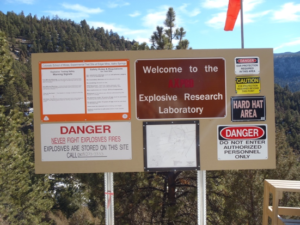
- Measure explosive energy and post-detonation gases
- Experimentally test energetic material performance
- Experimentally study and test the properties of high-density ammonium nitrate to develop industry quality control standards
- Study fragmentation using novel methods in a variety of materials
- Study the environmental effects of blasting, including measurements of air overpressure and ground vibration
In addition, the Explosives Research Laboratory provides services and technical consulting for industry partners, and our research facilities are used to offer world-class explosives training for a variety of government and private groups.
Large-Scale Test Site: The outdoor Explosive Research Laboratory (ERL)
The Outdoor Explosive Research Laboratory is a 2000-acre property in Idaho Springs, CO, with the goal of being a world leader in explosives testing and characterization. The laboratory consists of multiple test sites and support facilities. The test site has high-security cameras around the perimeter and security card access with support facilities including an on-site office, preparation/changing room, and a machine shop. The laboratory is fully equipped for electricity, internet, and phone service and has access to earth-moving and other heavy equipment. The site has explosive storage limited to 40,000 lbs, according to ATF and state explosive permits. The ERL has an established Net Explosive Weight (NEW) up to 20 lb open-air detonation.
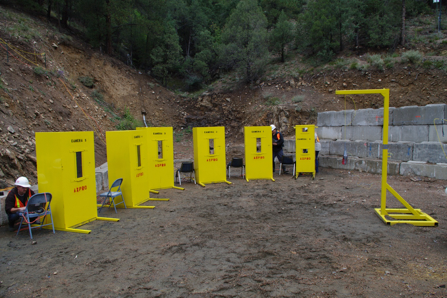
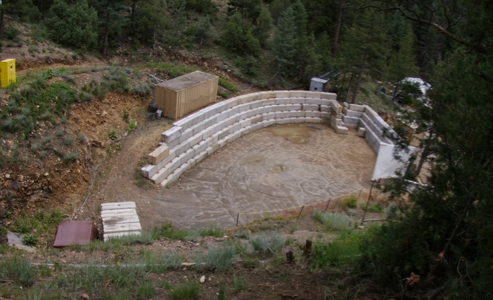
Small-Scale Blast Chamber – Mines Campus
The indoor blast laboratory is located on the Colorado School of Mines campus in Brown Hall. The on-campus laboratory includes an indoor blasting chamber, vacuum chamber, and a separate rock fragmentation laboratory. Support facilities include a sample preparation lab; machine shop; fully equipped offices, meeting rooms, and classrooms; two outdoor type-two magazines; and one indoor type-two magazine with fire protection cabinet. The indoor blast laboratory has a 20 g performance testing limit and includes free-field and underwater aquarium testing.


High-Fidelity Mobile Detonation Physics Laboratory (HFMDPL)
Recognizing that not all testing can be done in a laboratory environment or at our facilities in Colorado, our team has developed the only available High Fidelity Mobile Detonation Physics Laboratory (HFMDPL) in the world. The HFMDPL is a state-of-the-art mobile laboratory, which enables the most precise measurement of detonation properties of both ideal and non-ideal detonations. The HFMDPL enables the our research group to conduct full field-scale testing at any test range location based on client/partner requirements.
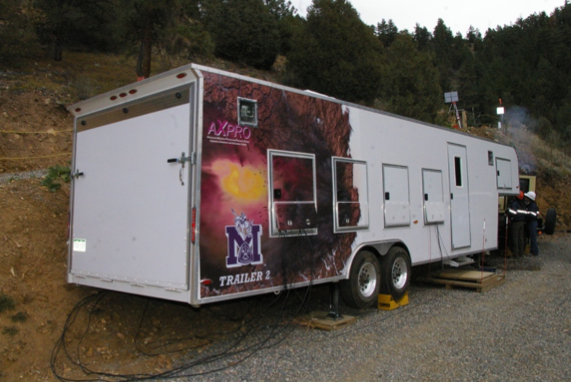
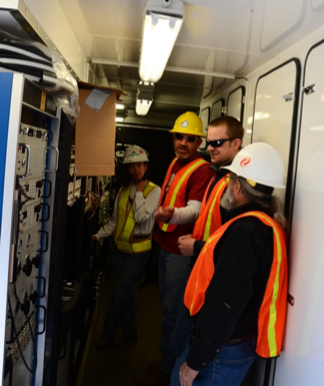
Specialized Instrumentation
- 4 channel flash X-ray 450keV
- 8 channel – Photon Doppler Velocimetry (PDV)
- High-Speed Cameras: Phantom v711, Phantom v7.3 and Photron Fastcam SA-X2
- Ultra-High-Speed Cameras: SIM X16 (up to 7 million frames per second) and Shimadzu HPV-X2
- Lighting Systems: Alien Bees Flash Unit B1600 and Megasun 15kJ 700us pulse
- Velocity of Detonation (VOD) instrumentation: MREL Microtrap (4 channels), MREL Handitrap (2 handhelds)
- Manganin Gauges
- Free-field piezoelectric pressure sensors: PCB127A23 and PCB103B02 series
- Underwater pressure sensors: PCB138A10 series
- Signal conditioners: PCB482C05
- Delay generating modules: Standford DG535
- Oscilloscopes: 2 DPO 72004C (100 GS/s) and 4 MSO 5054 (5GS/s)
- Initiation Systems: Exploding-Bridgewire (EBW), electric, electronic, shock tube, and remote wireless firing devices
- Vibrational Spectroscopy: RAMAN (Ahura) and FT-IR(True-Defender)
- Gas Chromatography/Mass Spectrometry: Griffin 460
- Exploding wire setup, 50kV, multiple synchronized wires
- Schlieren setups: a 25cm diameter z-folded system and a 15cm-diameter z-folded system
- Caustics visualizations (in transmission)
- Photoelasticity visualization system